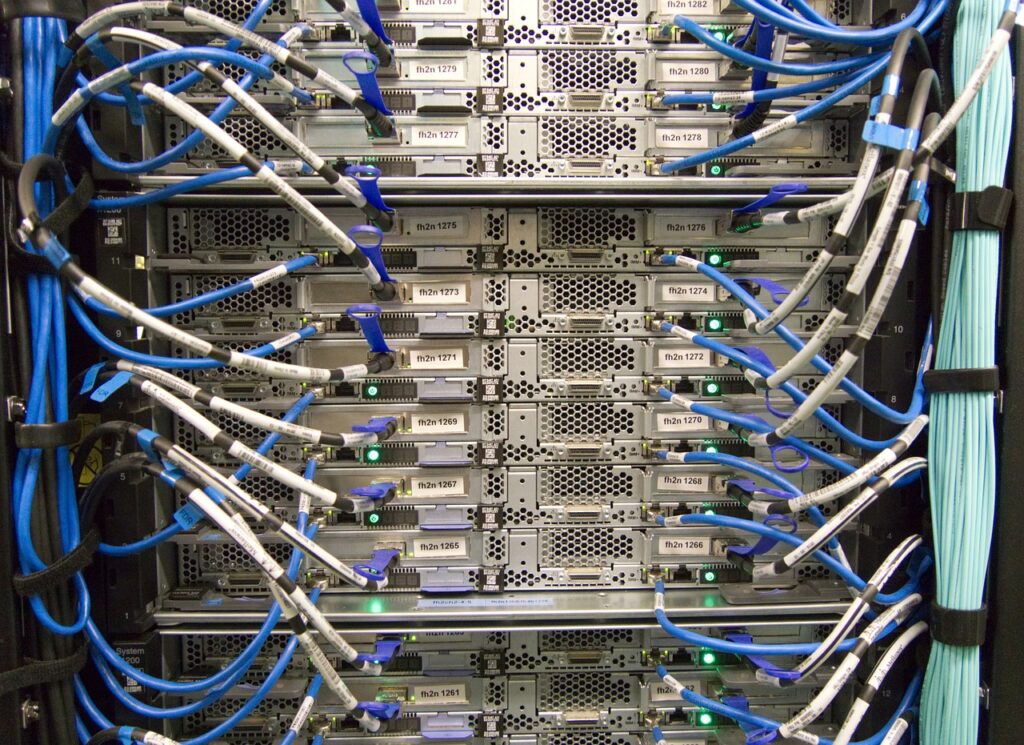As our digital infrastructure expands, data centres face the challenge of keeping their facilities sufficiently cooled. Traditional air conditioning systems are energy-intensive and rely on greenhouse gas-emitting electricity. However, new and innovative cooling solutions for data centers are emerging. It allows data centres to maintain optimal temperatures in a more sustainable manner.
The Need for Eco-Friendly Data Centre Cooling
Modern data centres contain rows of densely packed servers and other hardware that produce tremendous amounts of heat. This heat needs to be continuously dissipated to prevent overheating and system crashes. With our reliance on cloud computing and digital services growing, data centre workloads are dramatically increasing.

Unfortunately, traditional air conditioning methods used for cooling consume massive amounts of electricity. Data centre cooling accounts for up to 40% of a facility’s total energy use. This contributes significantly to the IT sector’s carbon footprint. It’s clear that innovative, eco-friendly cooling solutions are needed for sustainable growth.
Innovative cooling solutions for data centres: Water Cooling Systems
One of the innovative cooling solutions for data centres that are gaining significant traction is water cooling. This approach circulates chilled water through pipes to absorb heat directly from servers and other hardware. The warmed water is then cooled again in chillers and reused.
Water cooling can be up to 40% more energy efficient than air cooling. It also eliminates the need for computer room air conditioning units and their extensive ductwork throughout data centres. This enables more compact server designs.
Some facilities even utilize nearby lakes, rivers, seawater, or municipal water supplies for eco-friendly cooling solutions. The ambient temperature of the water can provide sufficient cooling for part or all of the year without chillers.
Facebook’s data centre in Lulea, Sweden exemplifies these benefits. It draws frigid water from the Baltic Sea to cool its servers without any supplemental chillers. This free water cooling reduces the facility’s energy use for cooling by more than 90%.
Innovative cooling solutions for data centres: Free Air Cooling
Air cooling still has its place in green data centres when leveraged strategically. Free air cooling, also known as air-side economization, uses outdoor air to remove heat from a data centre. This passive approach requires no mechanical cooling.
By opening air intake louvers when outdoor temperatures are low, data centres can cut back or eliminate chillers and air conditioning. Cooling units only activate if the external air becomes too warm. Smart controls allow facilities to automatically switch between free cooling and active cooling as outdoor conditions change.
Climates with colder winters like Northern Europe, Canada, and the Northern United States can utilize free air cooling year-round. But even warmer regions can take advantage of cooler nights and seasons. The National Snow and Ice Data Centre’s data centre in Colorado uses air-side economization 95% of the year, reducing cooling energy by over 60%.
Innovative cooling solutions for data centres: Evaporative Cooling
Evaporative cooling harnesses the natural process of evaporation to lower air temperatures. This technology uses pads made of porous materials that are kept saturated with water. As air passes over the pads, the water evaporates absorbing heat and causing the air temperature to decline.
Data centres can install evaporative cooling units near air intake points to provide cool air to server racks. The temperature of air exhausted from servers only drops slightly as it carries heat away. This creates an efficient heat exchange.
Evaporative cooling is well-suited for hot and dry climates like the Southwestern United States. For example, Facebook’s data centre in New Mexico uses evaporative cooling to minimize mechanical refrigeration up to 75% of the year. The cooled air also lowers the facility’s humidity which protects IT equipment.
Innovative cooling solutions for data centres: Two-phase immersion cooling
Immersion cooling eliminates fans and chillers altogether. This is by fully submerging IT hardware in liquid coolants. The most common coolant is mineral oil. It absorbs heat effectively while keeping electronics dry and insulated. Moreover, tanks of mineral oil can maintain temperatures under 122°F (50°C).
Some immersion systems use two-phase cooling for even greater efficiency. Servers transfer their heat to boil coolant in a vacuum chamber. The vapor condenses back to liquid on cool coils and cycles continuously. This achieves incredible cooling densities of over 60kW per rack with no pumps required.
Compared to air cooling, two-phase immersion cooling reduces data centre energy use for cooling by 80% to 97%. When combined with free cooling techniques, the savings are even more substantial. This is why major providers like Microsoft are exploring immersion technology for next-generation data centres.
Innovative cooling solutions for data centres: Monitoring and Optimization
Today’s green data centres optimize efficiency by combining water, air, evaporation, and immersion cooling strategically based on their climate and facility. Continuously monitoring temperature gradients, moisture levels, IT load, and other metrics enables precise dynamic cooling control.
As the heat load changes, cooling systems increase or decrease their output. It is to provide just enough cooling to maintain ideal conditions. As a result, it prevents overcooling. This intelligent automation ensures cooling matches real-time needs and minimizes wasted energy.
Some data centers are even integrating AI to analyze data and predict future cooling demands. The AI can proactively spot inefficiencies and tailor cooling patterns to upcoming weather shifts. This level of precision optimization can push energy savings to new heights.
Innovative cooling solutions for data centres: Heat Reuse Opportunities
There are numerous innovative data centres that are exploring ways to capture and reuse waste heat from cooling. This recovered thermal energy can:
- Heat buildings
- Melt snow
- Drive absorption chillers
- And also enable district heating systems
For instance – the lefdal mine data centre in Norway pipes its hot cooling. This is through adjacent greenhouses and fish tanks. So, by converting heat to food production, it achieves a great reuse effectiveness ratio.
Furthermore, data centres can reject heat through thermal storage. Chilled water is created during these off-peak hours. It is to cool facilities when electricity or temp. Spikes. So stores thermal energy shifts cooling enables. As a result, it enables better demand management.
The Path to Net Zero Carbon
Continued innovation in sustainable cooling is essential for the IT sector. It helps to curb emissions while meeting robust demand growth. Furthermore, combinations of water, evaporation, immersion, etc can make net zero-carbon data centres.
Intelligent controls, heat reuse mechanisms, and renewable energy will also play key roles. However, collaboration is needed to tackle the complex engineering and policy challenges involved.
Join the Conversation at the 2024 Net Zero Data Centre Summit
Join the 2024 Net Zero Data Centre Summit in Berlin on February 1-2! This event brings IT leaders and innovators together to make data centres eco-friendly. Learn about new technologies like immersion cooling and heat reuse. Share ideas, form partnerships, and act now as global data centre demand is increasing.
By 2030, data centre electricity demand is expected to exceed 514 TWh/year worldwide. It’s crucial to act promptly. Let’s create an innovative, accessible, and sustainable digital future together. Don’t miss this opportunity to be part of the change. Secure your spot today!





